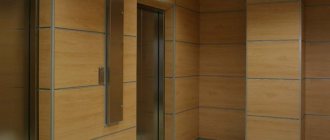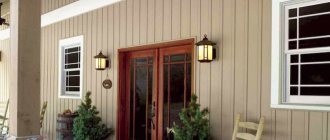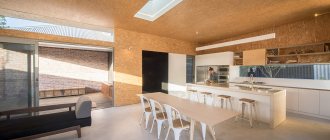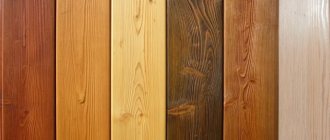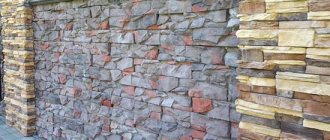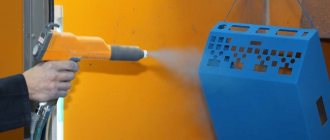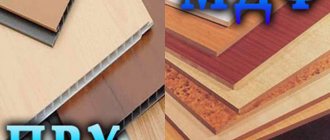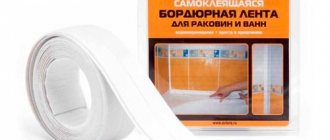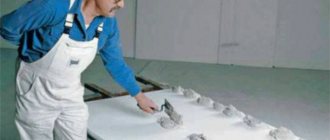Fiberboard sheets are often used for construction and furniture production. This is an inexpensive material with relatively high consumer characteristics. A significant disadvantage of fiberboard as a building material is its poor resistance to moisture. Fibreboard treatment can protect the material from destruction.
Fibreboard is a material that is produced by hot pressing wood fibers into sheets. With constant exposure to moisture, fiberboard absorbs it, which leads to swelling, warping and other deformations of the sheets and subsequent destruction of the sheets, they begin to crumble and break. Therefore, treating fiberboard from moisture is simply necessary if you want the material to last you longer.
How to cover fiberboard from moisture? The question is relevant for both experienced craftsmen and beginners.
Fibreboard processing includes the following methods:
- Lamination
- Treatment of fiberboard with various impregnation compounds
- Treatment of fiberboard with a water-repellent composition
- Pasting fiberboard with polymer film
Fiberboard lamination
One of the most common methods of processing fiberboard. It is most often used in factories and enterprises that produce fiberboard. Lamination resists moisture well and also protects the material from exposure to UV radiation and high summer temperatures.
Lamination involves gluing a fiberboard sheet with a special film under high temperature and pressure. Under such conditions, the polymerization process occurs.
Treatment of fiberboard with various impregnations and compositions
How to cover fiberboard so that it is not afraid of moisture?
In construction stores you can find a lot of special products for protective impregnation. Among them are antiseptics. They will not only protect from moisture, but also prevent the development of mold and rot.
Treatment of fiberboard with water-repellent compounds. These are special compounds aimed at protecting the material from exposure to water.
Processing of fiberboard with acrylic varnishes. This processing method will not only protect the material, but also improve its appearance.
Processing of fiberboard with paints. The simplest and most affordable way to protect a material from external influences is to paint the surface in several layers.
All these products are sold ready-made in any construction supermarket.
You can also use old time-tested methods, for example, treating the surface with heated paraffin.
Pasting fiberboard film
Stores often offer various decorative films for gluing fiberboard panels. This processing method is the simplest; a self-adhesive film is glued to a well-cleaned surface. But on the other hand, this method is also the most unreliable. Because if dust remains on the surface, the film will not fit tightly and will begin to bubble and peel off.
Applying paint
It is not recommended to use a foam sponge or brush for painting - this will not allow you to distribute the paint as evenly as possible, which will most likely leave streaks. The best choice here would be a spray bottle, but you can get by with a regular fur roller.
If you are working with a relatively small area, you can get by with spray paint - after all, it has a built-in spray bottle, so painting will go much faster, and the result will please you with quality. When purchasing, you just need to take into account and compare the price of both options: spray cans and cans of paint.
Before you start painting, the contents of the jar should be thoroughly mixed. If the paint turns out to be too thick, you can add a solvent to it, which is then mixed again.
Important: if during work it seems to you that in some places the paint has been absorbed poorly or, conversely, too well, then you should not immediately correct it - you should wait until the layer has completely dried.
The second layer should be painted only after the first has completely dried - most often this takes about a day. You shouldn’t make the common mistake of creating a draft in the house to make it dry faster. For the second layer, thick, undiluted paint is used. The third layer is also applied after the second has completely dried.
Important note: painting hardboard not only and not so much improves the external characteristics of the material, but rather extends its service life. It is also important that the paint and primer match the base.
Advantages and disadvantages of fiberboard
Fiberboard is made by pressing waste left over from woodworking. When exposed to high pressure and high temperatures, a smooth and lightweight material is formed. Due to their advantages, the slabs can be used for cladding walls, floors, and you can often see fiberboard on the ceiling. The material is also widely used for the production of cabinet furniture.
Among the main advantages are:
- Affordable price. The board is made from various wood processing waste. It also contains sealing resin and antiseptic additives. The price of these materials is significantly lower than other analogues.
- Strength. On the modern construction market, fiberboard slabs of varying degrees of strength are offered - the strongest of them is marked “ST”.
- Resistant to moisture. If you properly treat the fiberboard and then paint it, the material will be well protected from moisture.
- High durability. At the production stage, fiberboard sheets are coated with special impregnations that protect the material from fungal growths or insects. As a result, the slabs can retain their original appearance for a long time.
Like any other material, fiberboards have their downsides, but there are only two of them:
- impossibility of use in various load-bearing structures;
- Decorative processing is possible only on one side.
The slabs are excellent for arranging rough or finished floors, but their surface must first be carefully treated.
On the video: types of wood boards - characteristics and features.
Using plywood as flooring
Sheets of plywood are very often used as a so-called subfloor, and they are a preparatory base for more expensive floor coverings. But even if you use plywood sheets as the main floor, they must be carefully processed.
It would be good to sand the surface, then coat it with acrylic primer and dry thoroughly. Acrylic in this case will also help protect the floor from the appearance of fungi and mold. After this, the plywood sheets are coated with paints or varnishes. During operation, it is necessary to monitor the condition of the protective surface and, if necessary, subject it to restoration as discussed above.
Dyeing technology
The technology for painting fiber board is no different from painting any other materials. The process is carried out in several stages:
- collection of tools;
- surface preparation for painting;
- choice of paint;
- direct painting;
- application of a protective coating.
Required Tools
To paint a fiberboard floor you need to prepare:
- a fur roller (foam rubber is not suitable for these purposes);
- paint brush;
- paint tray;
- rag;
- vacuum cleaner.
Next, the preparatory stage begins.
Surface preparation
It is imperative to take into account an important nuance - before performing any work with fiberboards, the fiberboard is first brought to a certain humidity. Otherwise, over time, the slab will move in waves, thereby ruining the floor or wall. Moistening fiberboard is simple: moisten the back side of the sheet with warm water, and then fold the sheets in pairs. The slabs should be left to dry for a day.
How to paint a fiberboard floor with your own hands - step-by-step guide
Many people believe that painting fiberboards is a simple and elementary task. However, most often this opinion is held only until it comes into contact with practice - the number of problems that a beginner may encounter in this matter is difficult to overestimate.
Take the main one - porosity, which is one of the main features of this material. It is determined by the fiberboard production technology itself. But this technology, which consists in pressing wood fibers together with binding materials, allows fiberboard to last more than 10 years if properly processed.
In order for the floor to boast the same life expectancy, it is very important to properly treat it, including painting. Floors made from hardboard sheets are very porous, so they absorb paint much more than their wooden and concrete counterparts. As an option, experts suggest priming the surface - if this is not done, a positive result, of course, can be achieved, but it will take much more paint. However, let's look at all the nuances of the process in more detail. So, how to paint a fiberboard floor?
Preparatory work
The preparation consists of the following:
- Sanding the surface for painting. In addition to eliminating pores, grinding will make the initial roughness of the material more uniform, which will not only facilitate the painting process itself, but will also increase the visual perception of the finished result.
- Putty joints. This is done if several joined fiberboard sheets need to be painted. Not just any putty will do, but only one that is highly flexible, in particular acrylic. It will help tightly fix the contact points of adjacent sheets and thereby facilitate their subsequent painting. It is also acceptable to use sealants based on acrylic or silicone.
- Degreasing the surface with any organic solvent. The operation is carried out so that traces of grinding, as well as excessive oiliness of the surface, do not deteriorate the quality of its painting.
- Primer. Will provide a reduction in the consumption of base paint; at the same time, those pores that could not be eliminated as a result of grinding are simultaneously blocked. The primer should be heated to 40-60°C before use. The viscosity of the primer (usually ordinary drying oil is used, although alkyd primers are also suitable) decreases, and its fluidity increases. The primer coating is applied in one layer.
Necessary tool
So, let's start in order. Just before preparing the surface, we will collect everything necessary that we may need during the work. First of all, you should stock up on the necessary tools so that the work can be completed in the shortest possible time and with less effort.
- Paint roller with a nozzle made of fur rather than foam rubber
- Brush, some areas cannot be painted with a roller
- Drawer for paint
- Spatula if application of sealant is expected
- Vacuum cleaner for cleaning the surface after grouting
Now that you have prepared all the tools, let's move on to painting. But there is no need to rush here either. Next, preparatory work is needed.
Feature of fiberboard
So, if the owner of an apartment or house has decided to lay fiberboard on the floor, then in this case he should know some of the features of this material. This will give a person an understanding of how to work with fiberboard. Here are some of these features:
- Fiberboard is a material that is made from wood shavings with the addition of special components;
- this material is no less durable than chipboard, however, it can last longer;
- Fiberboard is available in the form of slabs of different thicknesses and lengths. Thus, a person can choose exactly the material that is best suited for his home;
- The option of laying fiberboard on the floor followed by linoleum coating is used quite often and is an effective type of coating.
Experts recommend using fiberboard slabs with a thickness of 0.5-0.6 cm for laying on the floor. In this case, sheets with the maximum available dimensions should be used. This will make it possible to reduce the number of joints on the surface.
Sequence of laying linoleum
Like fiberboard, linoleum should rest in the room where repairs are being carried out. For this, 2-3 days are enough: during this time the material adapts to the temperature and humidity conditions, and after installation it will not expand or, conversely, contract. Sheets of linoleum are spread on the floor so that they take the correct shape. If the material is going to be laid in strips, you need to make sure that the pattern of the floor covering matches.
Linoleum must be glued to the flooring; it is not recommended to use self-tapping screws: they will ruin the appearance of the floor. To perform installation work, special glue is used. It is applied to the floor using a notched trowel, avoiding lumps and untreated areas. When the glue on the fiberboard boards thickens a little, it is applied to the back side of the linoleum sheets, and then they are laid on the floor surface. To properly distribute the glue under the linoleum surface, the flooring sheets are aligned from the center to the corners.
Often laying linoleum on fiberboard is done in a different way. Instead of gluing the material, it is fixed using a furniture stapler. This tool is designed for working with wood and wood waste boards, and will ensure high reliability of fastenings.
Sheets of linoleum should not be laid close to each other on the floor, but with a small gap. The size of the gaps is usually one third less than the thickness of the sheets. Outwardly, these gaps are invisible, so there is no need to worry about the appearance of the floor covering. They are designed to remove moisture that accumulates between linoleum and fiberboard boards and extend the life of the coating.
Sometimes linoleum is installed on a painted surface. This usually occurs when there are no other materials available to assemble the deck other than painted fiberboard. In this case, laying linoleum on the floor is allowed only if the paint has dried long ago, is evenly distributed over the surface of the flooring and does not contain lumps. Typically, linoleum is not attached to a painted base.
There may be several reasons for repairing the floor: unevenness of the base, various damages, the need for insulation, and the like. Today there are many materials available on the market, which makes it very difficult to choose one or another floor covering.
However, no matter what material you choose, be it laminate or parquet boards, in any case you cannot do without a solid foundation for laying new flooring. To create it, they also use different materials, but hardboard would be the best option. The material is one of the varieties of fiberboard (fibreboard).
Hardboard
Application of additional materials
Auxiliary materials used:
- Putty designed specifically for wood. This will allow you to create a smooth surface for paint.
- Using a primer. The primer is based on polymers. It penetrates deep into the surface, giving it excellent grip (adhesion).
- Application of varnish. It is applied on top of the paint. The varnish is used for two types of coating: wall and floor. You can create hydrophobic coatings.
- The surface is treated using adhesive sandpaper.
- The putty is applied and dried.
- The plywood is sanded using a thin ambrasive.
These were additional tips when working with plywood.
Plywood is a material made from wood that can deteriorate from exposure to temperature and excessive humidity. But when using carefully selected insulation, it is able to maintain its qualities for a long period of time, delighting you with aesthetics and an attractive price.
At the end, you will need to impregnate the plywood, which has a base of alkyd or water-dispersed primer.
If some defects in the form of cracks have formed on the plywood, then its surface must be renewed. If the update is carried out immediately without delay, the service life of the plywood will be extended. Paint cannot solve the problem; in this case, you need to use sandpaper. After treatment, it is necessary to renew the protective coating.
